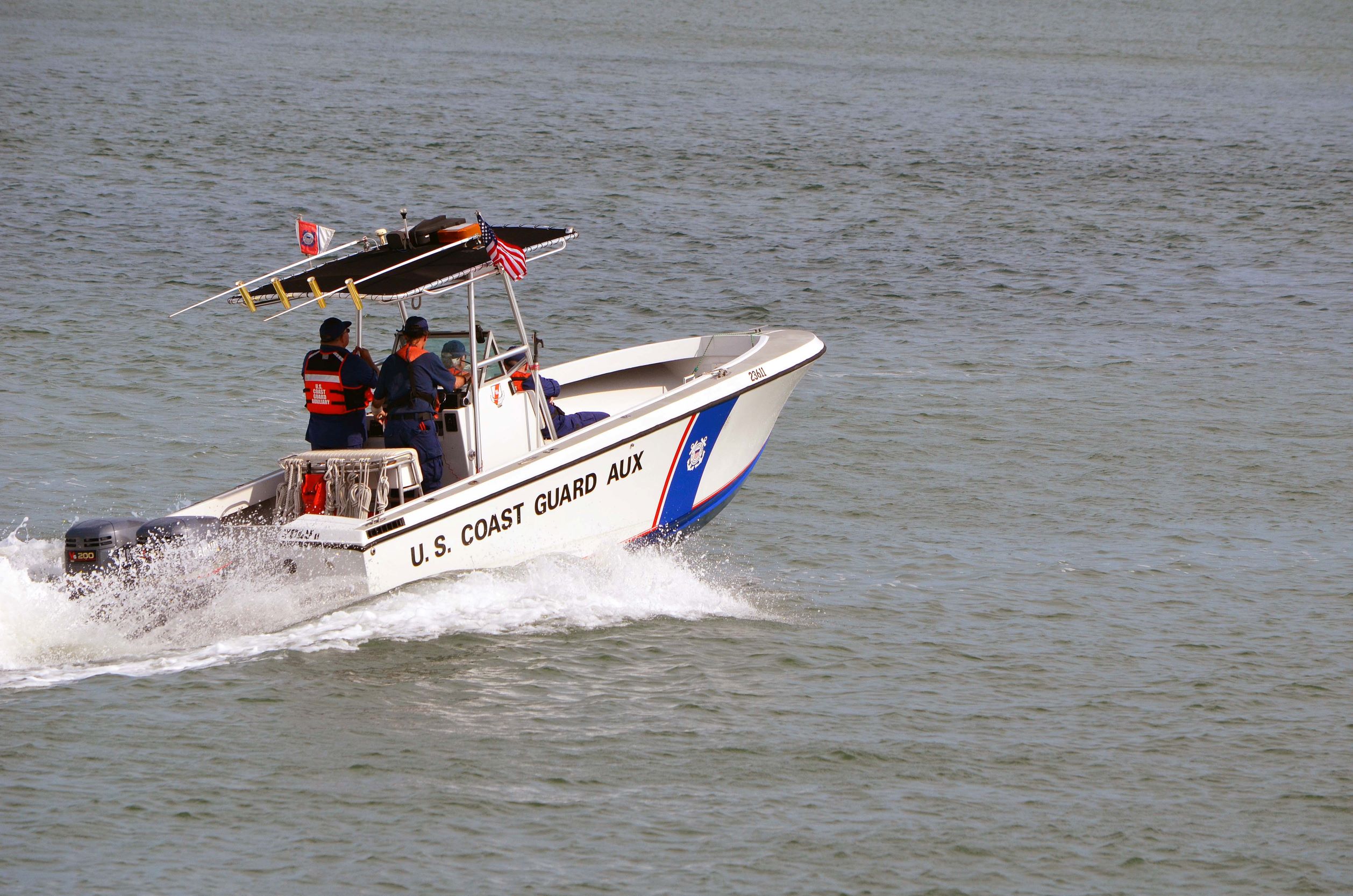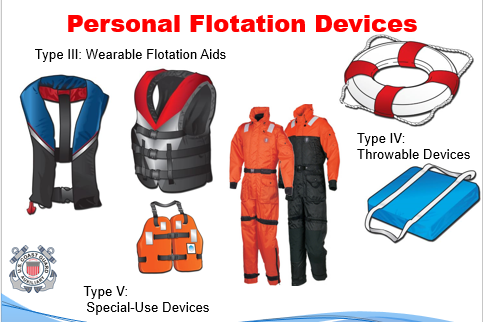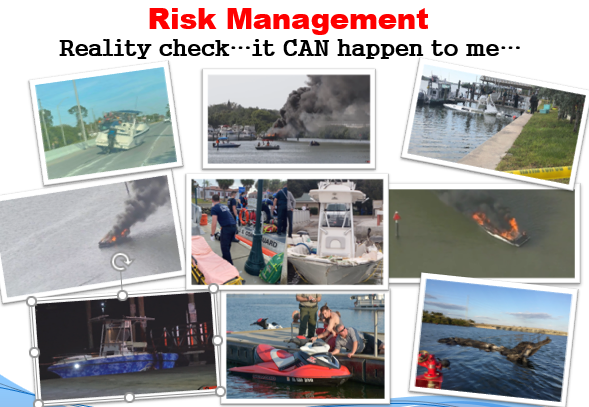 Florida is the boating capital of the country. Unfortunately, it also leads the nation in boating accidents, death and property damage. And the numbers are growing. In 2020, the number of accidents increased 26.3%, the number of deaths increased 25.1%, and the number of injuries increased 24.7% over 2019. The Coast Guard counted 5,265 accidents that involved 767 deaths, 3,191 injuries and approximately $62.5 million dollars of damage. The fatality rate was 6.5 deaths per 100,000 registered recreational vessels.
Florida is the boating capital of the country. Unfortunately, it also leads the nation in boating accidents, death and property damage. And the numbers are growing. In 2020, the number of accidents increased 26.3%, the number of deaths increased 25.1%, and the number of injuries increased 24.7% over 2019. The Coast Guard counted 5,265 accidents that involved 767 deaths, 3,191 injuries and approximately $62.5 million dollars of damage. The fatality rate was 6.5 deaths per 100,000 registered recreational vessels.
When the cause of death was known, 75% of fatal boating accident victims drowned. Of those drowning victims, 86% were not wearing a lifejacket. Over 77% of deaths occurred on boats where the operator had not received boating safety instruction. Where does Pinellas County stand in comparison to other counties in the state? It placed third in accidents after Miami-Dade and Monroe.
By Capt. Karen Miller
These are not numbers we should be proud of. What’s the solution to safer local waters? Have everyone, regardless of age, wear a life jacket and have everyone, regardless of age, who operates a boat take a Florida-approved boating safety class.
The boating safety class is also a requirement for many boaters in Florida. In the Sunshine State, anyone born after Jan. 1, 1988 must successfully complete a boater safety course approved by the Florida Fish and Wildlife Conservation Commission (FWC) to operate any boat powered by more than 10 horsepower, and they are required to carry their boater education card with them when out on the water along with picture ID. (So anyone born before that date is not required to meet these conditions.)
Recreational boating and water activities are enjoyed by millions of Americans each year. To encourage growth in recreational boating and water activities, the Coast Guard Auxiliary recommends these boating and water safety best practices to support a culture of safety. 
- Life jackets: To practice responsible safety behavior, all boaters should always wear a life jacket on any vessel underway (i.e., motorized and non-motorized watercraft). We strongly encourage life jackets for children while swimming or during other activities on open water. Florida law requires all children under six years old, while underway on a vessel under 26’, to wear a properly fitted life jacket. Additionally, state law requires everyone on a Personal Watercraft (PWC) or being towed by a vessel (i.e., tubing, water skiing, and boarding) to wear a non-inflatable, properly fitted life jacket.
- Alcohol and drugs: Boating under the influence of alcohol is the primary leading cause of recreational boating accidents. The effects of alcohol and other drugs are magnified substantially on the water. There are a number of stressors encountered during a day on the water, including the sun (heat, dehydration, and sunburn), waves and wakes (trying to keep your balance), sound (the wind and motor), and the need to keep a sharp lookout for other boats and navigation hazards. Alcohol and drugs exacerbate those stressors and can easily lead to accidents.
- Engine Cut-Off Switch: An engine cut-off switch should always be used on a watercraft with a motor (i.e., powerboat, personal watercraft). This may be a cord lanyard that is attached to the operator’s wrist or life jacket, and then properly attached, or a wireless switch that includes a wristband or visible fob for the boat operator and/or passengers. An engine cut-off switch will immediately stop the boat’s engine should the operator (or for some brands, even a passenger) fall overboard. Far too many people are ejected from boats and then injured by the unmanned boat circling around and hitting them.
- Carbon Monoxide: Gasoline-powered engines on boats produce carbon monoxide, an odorless and colorless gas that is poisonous. People should avoid swimming anywhere near the stern (rear) of a motorized vessel or sitting on the swim deck/platform of a motorized vessel while the motor is running.
 To help counteract the horrific statistics noted above and to instill a culture of safety in everyone who enjoys the local waters, National Safe Boating Week was established. Typically occurring during the last week of May, it is a worldwide effort focused on responsible boating led by the National Safe Boating Council with support from boating safety advocates around the world. At its heart, the Safe Boating Campaign is a grassroots effort that collaborates with partners to share about safe boating in their local communities through events, social media, workshops and more. This effort has created worldwide recognition of the Safe Boating Campaign – reminding boaters to always wear a life jacket and boat responsibly.
To help counteract the horrific statistics noted above and to instill a culture of safety in everyone who enjoys the local waters, National Safe Boating Week was established. Typically occurring during the last week of May, it is a worldwide effort focused on responsible boating led by the National Safe Boating Council with support from boating safety advocates around the world. At its heart, the Safe Boating Campaign is a grassroots effort that collaborates with partners to share about safe boating in their local communities through events, social media, workshops and more. This effort has created worldwide recognition of the Safe Boating Campaign – reminding boaters to always wear a life jacket and boat responsibly.
On a local level, the Clearwater Coast Guard Auxiliary and its members have numerous activities planned to bring the safe boating message to the residents of Clearwater, Pinellas County, and the entire Tampa Bay area.
Starting off the safe boating campaign, the Clearwater City Council will be presenting the Clearwater Coast Guard Auxiliary with a proclamation. This proclamation encourages all boaters to renew their determination to always use courtesy and common sense afloat. It also asks all boaters to continue the spirit of Safe Boating Week throughout the entire year.
Then, on May 20, individuals are encouraged to wear their life jackets at work. The Clearwater Coast Guard Auxiliary would love the citizens of the community to don their life jackets that day and then send a digital photo to Karen Miller, Public Affairs Officer at capt.karen.miller@gmail.com. for inclusion in a collage to be published on Facebook and their website at www.USCGAuxClearwater.com.
The official start day, May 21, will have the Auxiliary spreading the word throughout the community. Several members will be at the Seminole Street Boat Ramp from 8 am to 11 am to offer free vessel safety checks. Another group of members will be at West Marine, at 2128 Gulf to Bay Blvd., from 10 am to 2 pm to provide literature, answer questions and provide sign-up sheets for future vessel safety checks and safe boating classes.
Capping off the week on May 28, members of the Auxiliary will again be at Seminole Boat Ramp to examine recreational boats for safety.
While that’s happening, other members will be serving the public with an open house at the Auxiliary’s headquarters at 510 North Ft. Harrison from 10 am to 3 pm. Members of the Coast Guard from Station Sand Key will be bringing over a boat on a trailer. There will be continuous tours of the boat and Auxiliary headquarters building, safe boating information, and hot dogs and beverages.
Learn more about the Clearwater Coast Guard Auxiliary at: www.USCGAuxClearwater.com or call 727-469-8895. A complete schedule of classes in the Tampa Bay Region is online at http://wow.uscgaux.info/peclass.php?unit=070-07-09.
The U.S. Coast Guard Auxiliary is a uniformed civilian volunteer component of the United States Coast Guard created by an Act of Congress in 1939. The Auxiliary, America’s Volunteer Guardians, supports the Coast Guard in nearly all of the service’s missions. The Tampa Bay Coast Guard Auxiliary encompasses two groups, Division 11 which covers from Madeira Beach north to Hudson and Division 7 which covers Madeira Beach south and east to St. Petersburg and Tampa. Find out about them and the Coast Guard Auxiliary at: www.cgaux.org.
